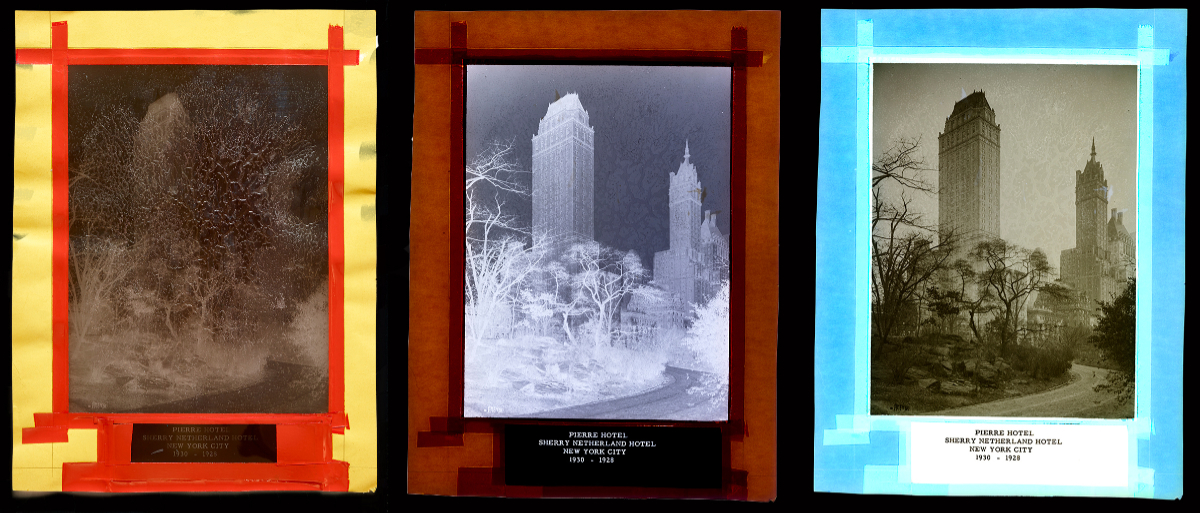The Schultze & Weaver archive at the Wolfsonian-FIU
One of the most valued holdings in The Wolfsonian–FIU collection is the Schultze & Weaver archive, a group of over 8000 architectural drawings, documents, and photographs produced by the renowned New York City’s architectural firm.
Between 1921 and 1948, Schultze & Weaver designed many iconic buildings throughout North America, including the Waldorf-Astoria and Pierre hotels in NYC, Park Merced Housing Development in San Francisco, the Freedom Tower in Miami, and the Havana Biltmore.
Among the archive are 87, 8×10 black and white silver gelatin negatives on cellulose acetate, produced in the 1940’s and 50’s, depicting many of the buildings designed by the firm.
Deteriorating cellulose acetate negatives
The negatives, acquired by The Wolfsonian in 1994, presented clear signs of vinegar syndrome, including distortion, shrinkage, cracking, and blistering of the emulsion.

Examples of Schultze and Weaver negatives with levels 5 and 6 of cellulose acetate deterioration. Image courtesy of The Wolfsonian–FIU, Miami Beach, Florida
While they were immediately stored in archival envelopes, they remained at a high risk of deterioration due to their inherent acidity and autocatalytic behavior at room temperatures.
Because of their poor condition, handling also presented an important issue to their preservation since any further damage to the film would also mean an irreversible loss of the valuable visual information that the negatives contain.
Preserving the Wolfsonian-FIU’s Schultze & Weaver collection
In February 2023, with help from the Conserv Preventive Conservation Award we were able to carry out a long-needed plan to preserve the Schultze & Weaver negative collection.
The goals of the project were twofold: first, to create digital surrogates of the negatives to preserve their visual information while limiting physical handling; and second, to extend their life expectancy by wrapping them properly and placing them in long-term freezer storage to prevent unnecessary exposure to the Florida environment.
Understanding cellulose acetate film degradation
The process started with cataloging each negative and documenting their condition and manufacturing marks, to better determine their origin and deterioration process. Acetate cellulose films are susceptible to rapid acidic decay, which becomes autocatalytic and can continue until the object is completely disfigured.
The film degradation is measured in six levels: In its early stages (2–4), damage manifests in curling edges, warping, and a strong vinegar smell (from the acetic acid products).
In later stages, the film starts shrinking and develops bubbling and channeling (level 5), which can evolve into separation of the film base from the emulsion layer (level 6).
In the case of the Schultze & Weaver collection —likely cellulose diacetate films produced between 1923 and 1955 by Kodak, Ansco, Defender, and Agfa— 92% of the negatives presented levels 5 and 6 degradations, which meant grave and immediate risk to both material and image’s permanence.
Scanning to save images
To preserve the images, the negatives were scanned using a Phase 1XF (80MP) camera, which produced high resolution photos that were then rendered as digital positives in Photoshop.
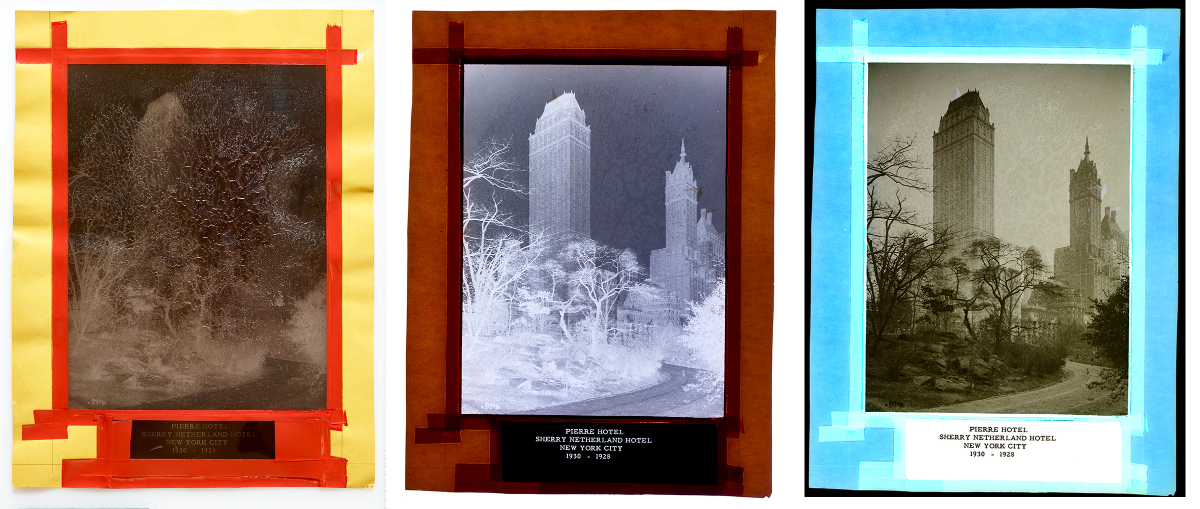
Pierre Hotel NYC, 1930, by Schultze & Weaver Architects. Left: condition of the negative. Center: scanned negative. Right: digital positive. Image courtesy of The Wolfsonian–FIU, Miami Beach, Florida.

Photographic negative, Aerial view of Park Labrea Housing Development, Los Angeles, CA. Left: condition of the negative. Right: digital positive. Image courtesy of The Wolfsonian–FIU, Miami Beach, Florida.
The new surrogates allow the information on the negatives to be accessible without the need to handle them. During this process, we also documented their condition as well as manufacturing marks for further research.
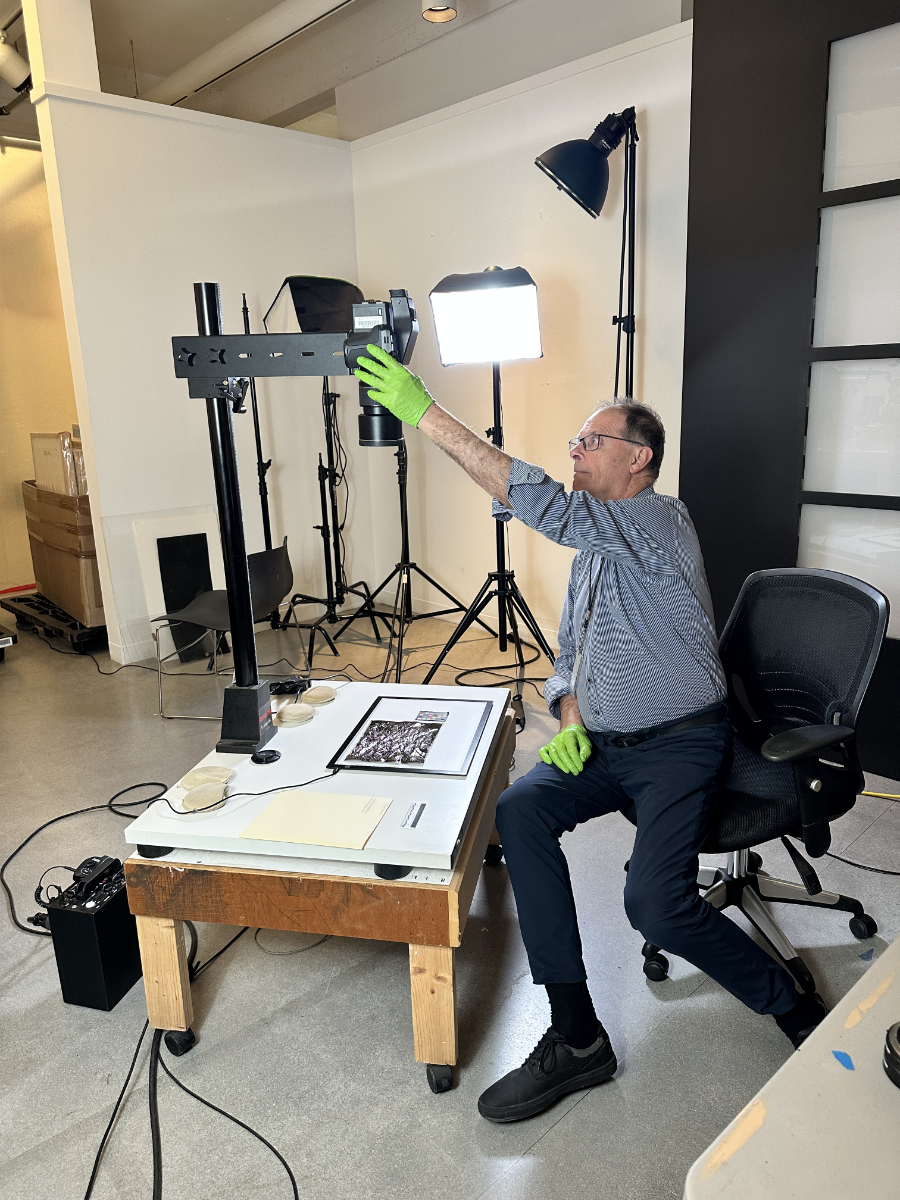
Wolfsonian-FIU photographer, Lynton Gardiner, working with the team to digitize the negatives. Image courtesy of The Wolfsonian–FIU, Miami Beach, Florida.
Cold storage to extend life span
According to the Image Permanence Institute’s Storage Guide for Acetate Film, at low humidity levels, degraded cellulose acetate film’s life span could be extended up to 110 years if it is stored in temperatures below 30°F, making freezer storage the best practice for the preservation of these materials. For that reason, the second phase of the project focused on wrapping the negatives for freezer storage, using the Conserv Award funds to purchase supplies.
Packing for cold storage
Following the recommendations for vapor-proof packing for photographic materials by the National Park Service, the negatives were placed in individual buffered cardstock folders inside acid-free boxes.
The boxes were then wrapped and sealed in a static shield bag followed by a thick polyethylene bag, well-sealed, with one visible RH card inside each bag for monitoring The bags will help maintain a constant RH humidity level inside the boxes and avoid condensation to form on the contents when retrieved.
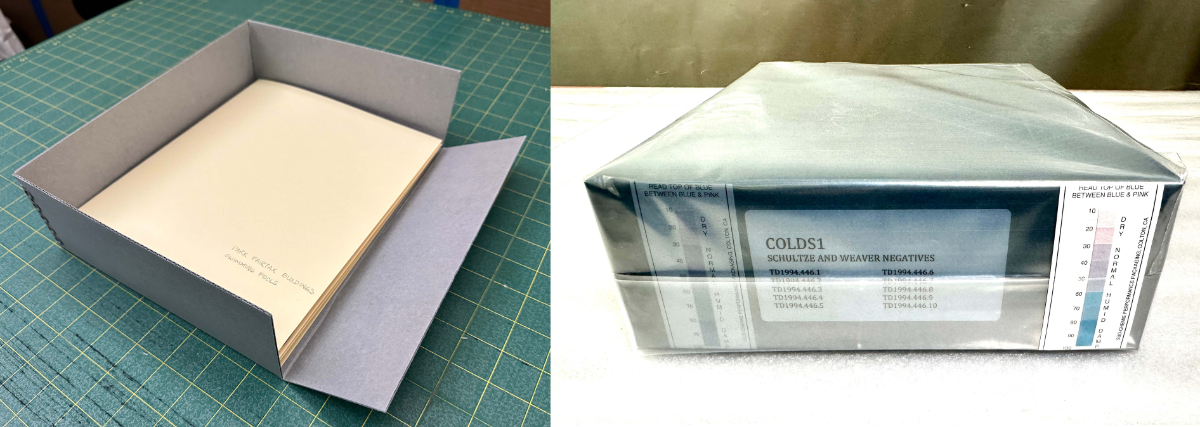
The degraded cellulose acetate negatives were placed in buffered folders and boxes, which were then vapor-proof packed for freezer storage. Image courtesy of The Wolfsonian–FIU, Miami Beach, Florida.
Finally, the sealed packages were placed in a freezer unit along with a Conserv Cold Storage Sensor for ongoing environmental monitoring.
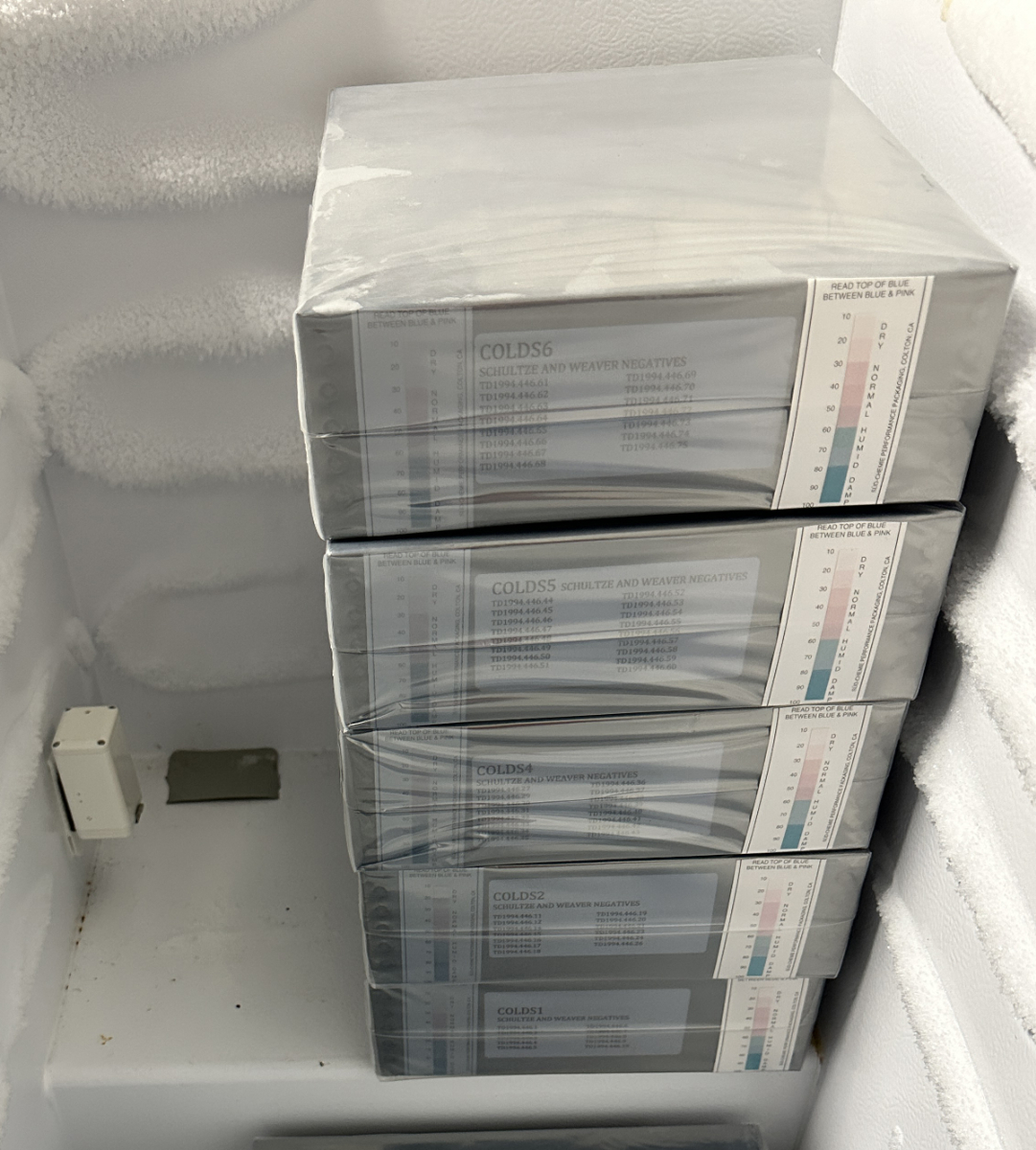
The wrapped boxes containing the Schultze & Weaver negatives were placed in a freezer unit with a Conserv Cold Storage Sensor for monitoring. Image courtesy of The Wolfsonian–FIU, Miami Beach, Florida.
Roadmap for cold storage at The Wolfsonian-FIU
The Conserv Award has given us the opportunity to extend the life expectancy of the Schultze & Weaver negatives while at the same time making their valuable content more accessible.
Most importantly, this project served as a pilot program for preparing other photographic and film materials in the collection for cold storage. By establishing new protocols for long-term preservation and access, we can accomplish a higher standard of care for these and other materials that require special environments.
If you have any questions about environmental monitoring, integrated pest management, or just want to talk about preventative conservation, please reach out to us! Don’t forget to check out our blog or join our community of collections care professionals where you can discuss hot topics, connect with other conservators or even take a course to get familiar with the Conserv platform.

